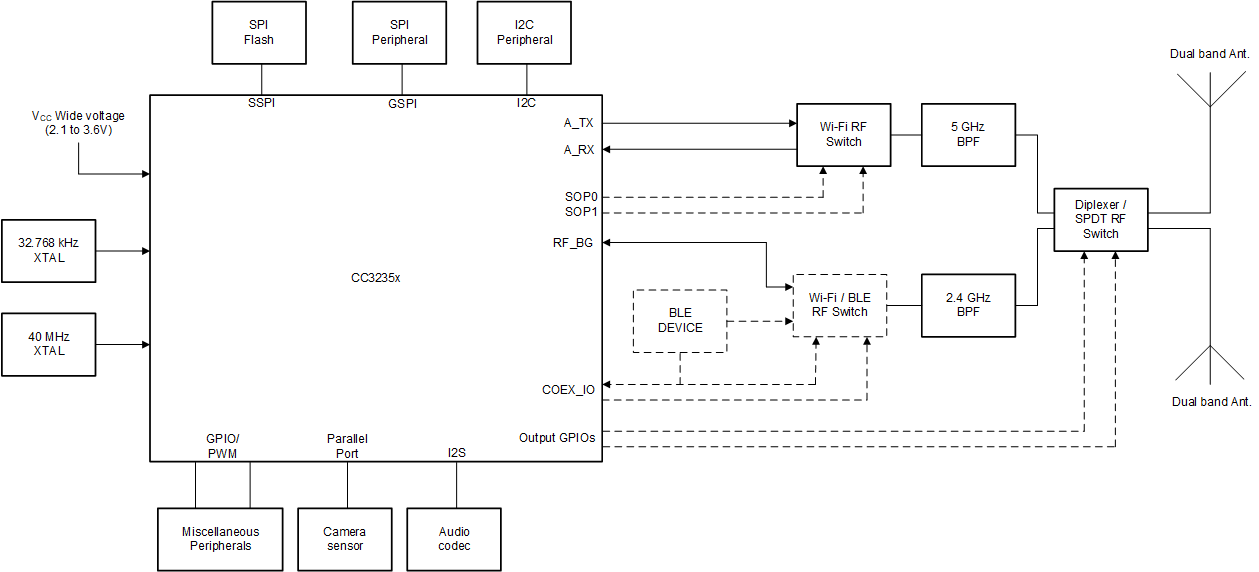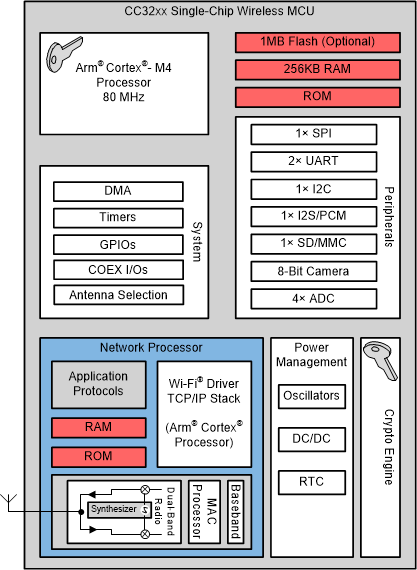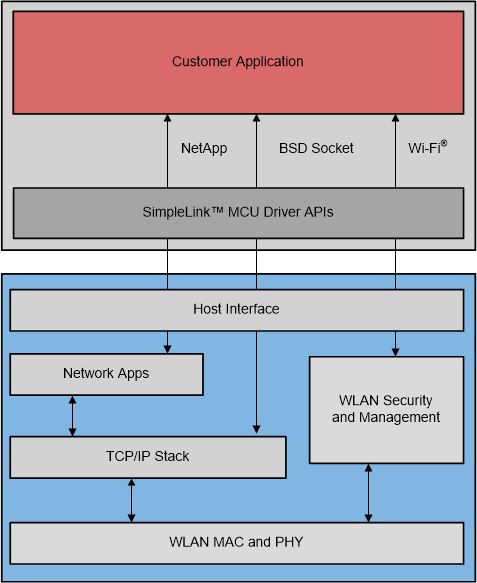JAJSGW3D April 2019 – May 2021 CC3235S , CC3235SF
PRODUCTION DATA
- 1 特長
- 2 アプリケーション
- 3 概要
- 4 機能ブロック図
- 5 Revision History
- 6 Device Comparison
- 7 Terminal Configuration and Functions
-
8 Specifications
- 8.1 Absolute Maximum Ratings
- 8.2 ESD Ratings
- 8.3 Power-On Hours (POH)
- 8.4 Recommended Operating Conditions
- 8.5 Current Consumption Summary (CC3235S)
- 8.6 Current Consumption Summary (CC3235SF)
- 8.7 TX Power Control for 2.4 GHz Band
- 8.8 TX Power Control for 5 GHz
- 8.9 Brownout and Blackout Conditions
- 8.10 Electrical Characteristics for GPIO Pins
- 8.11 Electrical Characteristics for Pin Internal Pullup and Pulldown
- 8.12 WLAN Receiver Characteristics
- 8.13 WLAN Transmitter Characteristics
- 8.14 WLAN Transmitter Out-of-Band Emissions
- 8.15 BLE/2.4 GHz Radio Coexistence and WLAN Coexistence Requirements
- 8.16 Thermal Resistance Characteristics for RGK Package
- 8.17
Timing and Switching Characteristics
- 8.17.1 Power Supply Sequencing
- 8.17.2 Device Reset
- 8.17.3 Reset Timing
- 8.17.4 Wakeup From HIBERNATE Mode
- 8.17.5 Clock Specifications
- 8.17.6 Peripherals Timing
- 9 Detailed Description
- 10Applications, Implementation, and Layout
- 11Device and Documentation Support
- 12Mechanical, Packaging, and Orderable Information


